You know that feeling when you're hopelessly hooked on a new show, constantly hitting "next episode" to see what happens? That deliciously obsessive need to keep watching just one more? Well, prepare to have your mind blown: research says you can indulge that addictive TV craving while working on your target foreign language!
You see, the language learning game has seriously leveled up in recent years. In fact, there are increasingly more studies available that show how our brains absorb language skills passively while being exposed to media content. This includes watching TV, movies, or any type of video resource.
To put it simply, it's like leveling up comprehension through pure entertainment instead of forcing it with textbooks and classroom drills. And if you think deeply about it, movies and shows are way more memorable and impactful than stale lessons. The gripping narratives, rapid-fire dialogue, and vibrant visuals create an immersive world where new vocabulary organically sticks.
Curious? In this post, we'll give you actionable tips and other language learning methods you need to master a foreign language with TV effectively. We're talking smart hacks to turn your Netflix obsession into an accelerated language course on the fly.
- How To Learn Russian Fast: Easy Step-by-Step Guide
- How To Learn German Fast As A Beginner [Tips & Tricks]
- What’s The Best Way To Learn Dutch On Your Own?

Can You Learn A Language By Watching TV?
The short answer? Yes, absolutely! But there's a catch - simply vegging out in front of the TV won't magically make you fluent. To effectively learn a new language through binge-watching, you need to be an active and strategic viewer.
For the "binge-learning" method to really click, you should already understand at least 70% of the terms being used. That level of comprehension allows your brain to organically pick up the remaining vocabulary and grammar through context clues and repetition. It's how kids effortlessly acquire language skills.
For total beginners, hitting that 70% mark can seem impossible at first. That's where subtitles and interactive viewing tools become your new best friends.
Being able to instantly click on unfamiliar words or phrases to reveal meanings, usage examples, and pronunciation guides is a game-changer. It simply transforms even the most incomprehensible foreign series into a multimedia textbook. This is precisely why Lingopie has integrated these powerful interactive features.
So while watching TV alone won't turn you into a fluent polyglot overnight, bringing intention and interactivity to your viewing habits can rapidly advance your skills and help you learn about the culture. All you need is the right tools and strategies to transform your sofa into a virtual language lab!
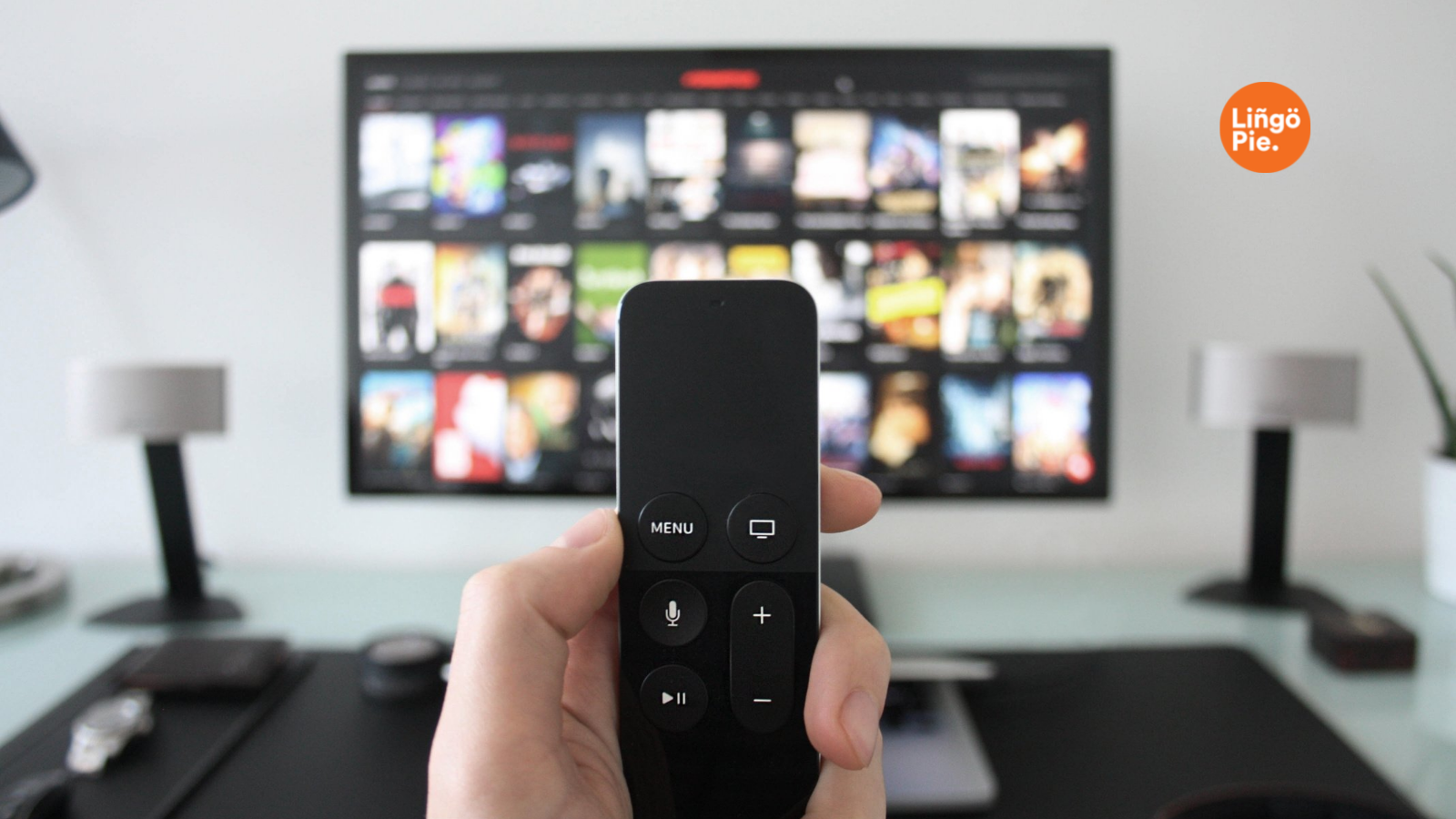
Is Learning A Language By Watching TV Effective?
Absolutely! In fact, optimizing your TV time for language acquisition taps into several well-established theories that support its effectiveness as an immersive learning method.
- Comprehensible Input Theory - This theory states language is best acquired through input slightly above your current level that you can mostly understand through contextual meaning. Popular shows deliver that perfect mix of familiar and new linguistic elements.
- Noticing Hypothesis - Proponents argue you need to consciously "notice" language features to acquire them. Actively watching foreign TV, pausing on unfamiliar phrases, and repeating out loud forces that hyper-focused attention.
- Interactionist Theory - This emphasizes the role of interaction/negotiating meaning in facilitating acquisition. While not inherently interactive, you simulate conversations by predicting dialogue, reacting emotionally, and imagining your own responses.
- Dual Coding Theory - Information gets enhanced retention when learned through verbal and visual channels together. The combination of audio and compelling visuals makes TV an incredibly sticky learning environment.
With respected acquisition theories firmly in its corner, doubling your Netflix habit as a fluency vehicle is backed by solid cognitive science. Not to mention, it's hands-down one of the most enjoyable and accessible study methods available!
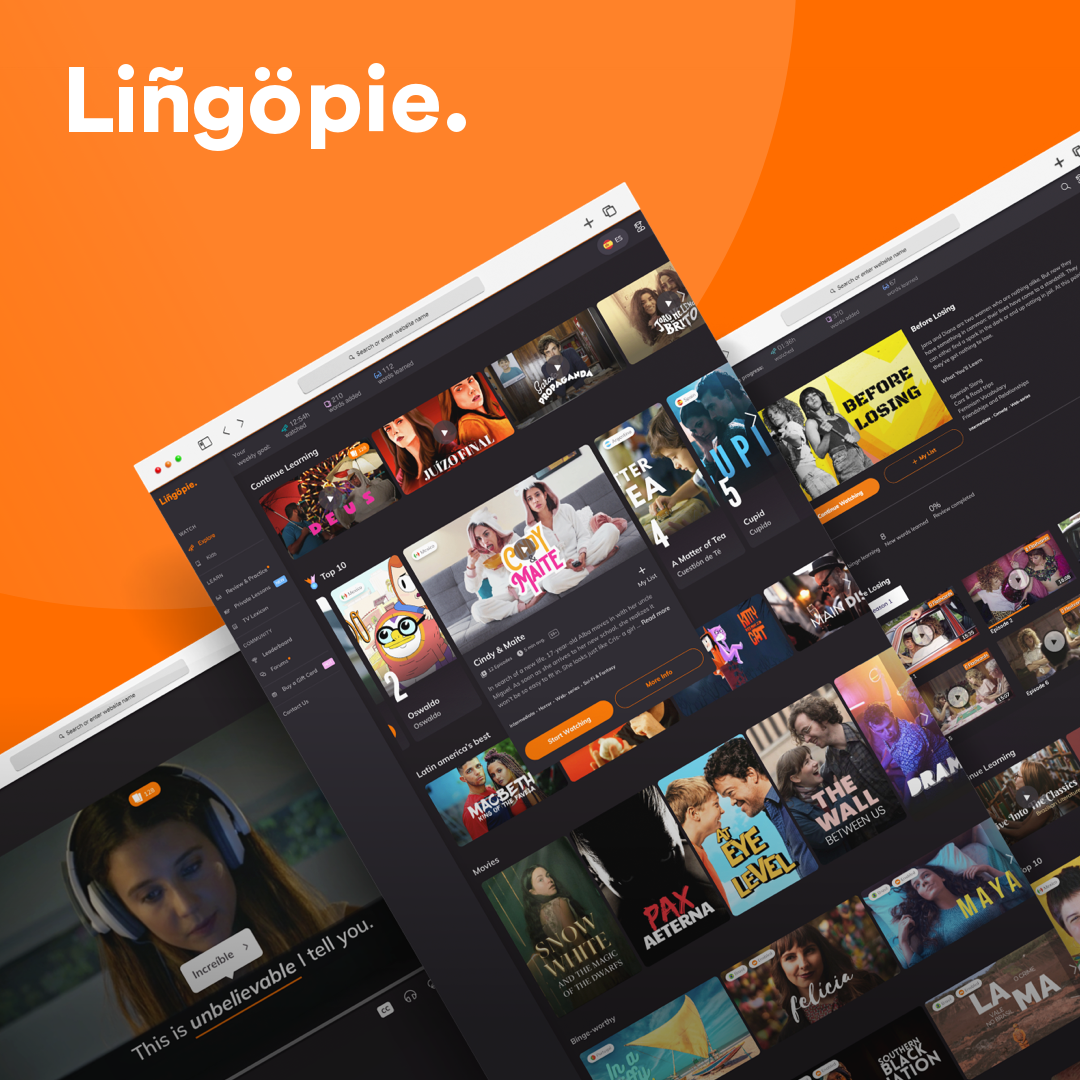
Can You Learn A Language By Watching TV With Subtitles?
Yes, you can definitely watch TV in a different language with subtitles as a way to learn that language!
In this domain, you have two options. You can either watch the foreign TV show or movie of your choice with subtitles in your own language or in the original language. Both methods will be useful to pick up new words and the option you go for will mostly depend on your level.
As native English speakers, by watching foreign language TV series with English subtitles, language learners are able to work on getting a general sense for what the language sounds like, particularly in terms of phonetics.
You'll also avoid going into panic mode when you don't understand the words that are being said, because you'll have the written text to help you follow the story.
Once you are comfortable with your level of understanding and are ready to progress to the next level, you can choose to display subtitles in the native language of the show.
By doing this, you'll see the written form of a word and match it to how the word sounds. So, you'll also be working on your reading and writing skills, besides your listening skills and pronunciation.
At this point, you can pause the video to look up words or grammar rules that you don't understand. Read our blog post giving you an overview over the best Lingopie language learning features.
Can You Learn A Language By Watching TV without Subtitles?
Once again, the answer is yes!
In fact, watching TV in your target language without subtitles is recommended if you're working specifically on hearing real-life language and it is appropriate for more advanced learners.
Nonetheless, this will be possible only once language learners have reached a certain level of fluency.

How To Learn A Language By Watching TV
As we mentioned earlier, if you want to make the most of this incredible tool as a language learner, certain strategies will help you along the way. Here are some quick tips for how to make the most of your learning experience with TV content...
Choose which watch shows to watch appropriately
This may seem like an obvious point, but it's crucial - you need to actually look forward to watching the show or movie for this method to work. Genuine interest and engagement are essential for absorbing and retaining the language.
Think about it - if you're just watching something you find dull or boring, you'll quickly lose focus and start zoning out. Those valuable comprehension benefits get completely negated if your mind starts wandering.
That's why the first step is choosing content you're organically curious and excited about, regardless of your current language level. Maybe you're obsessed with witty dark comedies, haute cuisine cooking shows, or edge-of-your-seat thriller mysteries. Whatever piques your interests and taps into your passions - that's what you should pursue.
The beauty of TV and movies is that you can often find engaging viewing options suitable for any proficiency stage.
- Beginner? Look for simpler dialogue and plots with heavy context clues.
- Intermediate? Sophisticated dramas with captivating storylines are your sweet spot.
- Advanced? Bring on those rapid-fire comedic dialogues incorporating idioms and cultural slang.
Focus On High-Frequency Words And Phrases
Instead of getting bogged down by every single unfamiliar word, train your attention on the vocabulary and expressions that keep popping up repeatedly. These high-frequency language components are your fast track to functional fluency.
As you watch, make a mental note (or jot them down!) anytime you hear a word, phrase, or grammatical construction used multiple times within the same episode or movie. For example, you may notice filler words like "um" or "like" getting heavy usage, or casual expressions for agreements ("gotcha", "sure thing"). Pay extra attention to how those are pronounced and used in context.
The same strategy applies to verb conjugations that seem prevalent. If you're hearing "estás" (you are) all the time in Spanish, focus on making that one stick along with its different applications. No need to sweat every single irregular form right away.
You'll also want to tune your ears to phrasal verbs, idioms, and slang that get tossed around frequently. Those add incredibly valuable color to your linguistic palette. Think "pigged out" or "rain check" in English - crucial for sounding like a natural native speaker.
By concentrating your efforts on the most commonly used vocabulary and speech patterns, you'll rapidly build a rock-solid linguistic foundation from the ground up. Those quirky less-common words can be treated like a "nice-to-know" bonus.
Divide The Episode Or Film Into Parts
Transitioning straight into fully comprehending rapid-fire dialogue in a foreign language is a big leap. Rather than get discouraged, break it down by dividing those TV episodes themselves into more digestible parts:
- Find shows and movies that provide good-quality subtitles or closed captions in your target language. Ideally, these would be proper, grammatically correct translations rather than just direct transcriptions.
- Pause frequently while watching to fully read and comprehend those subtitled dialogues. Don't rush through the previous audio and written words remaining unfamiliar.
- Replay important (or tricky) dialogue sequences over again until you gradually understand each spoken phrase.
This approach allows you to analyze the individual words and the underlying cultural delivery of speech patterns. Eventually, you'll be more amenable to hearing and understanding languages based on how they are properly spoken.
Stop And Repeat What You Hear
Pause the show whenever a catchy new phrase or vocabulary word gets dropped. Rewind if needed, then repeat it out loud multiple times until you can properly mimic the accent, inflections, and delivery. This kinetic technique of hearing it, feeling it in your mouth, then verbalizing it is a game-changer for imprinting accurate pronunciation.
Not only does it train your mouth muscles for difficult sounds, but it also locks those language components into auditory memory so you can retrieve and use them more fluently in real conversations down the road.
To take it to the next level, use a tool like Lingopie that provides instant pronunciation feedback. Thanks to its advanced AI technology, it can analyze your spoken words and phrases, comparing them against native recordings to pinpoint areas for improvement. You'll quickly course-correct issues like tongue placement, vocal cadence, and more.
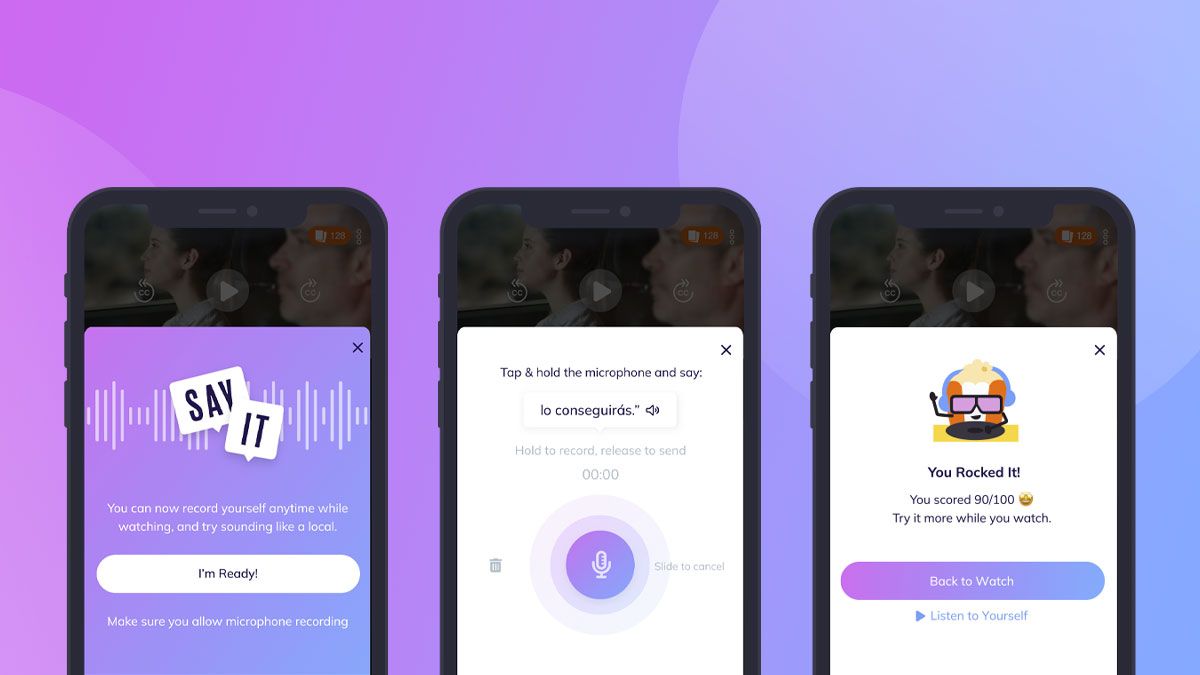
Write Down What You Hear And Practice Speaking
Keep a dedicated notebook or digital vocabulary journal handy whenever you sit down for a language-learning TV session. Anytime an unfamiliar yet high-value word or expression gets dropped, pause and jot it down immediately.
The physical act of writing out the new vocabulary item activates different neural pathways that reinforce memorization. It's a simple yet incredibly effective trick for imprinting those fresh terms into long-term memory banks.
But don't just stop at noting the definitions - go the extra mile by also writing out full sample sentences you hear each word/phrase used in. Seeing the full context helps solidify proper connotation and usage.
Once you've logged some new entries, it's time to give those vocal cords a workout! Read your compiled vocabulary list out loud, over-enunciating and repeating each item several times. The combination of physically writing it, seeing it, hearing yourself say it, and feeling your mouth form the sounds creates a potent multi-sensory absorption loop.
You can even take it a step further by attempting to organically work those fresh terms into original sample sentences of your own creation. Describe personal experiences, stories, or scenarios using the words in context to reinforce retaining their practical applications.
Plan Your Sessions
While learning a new language through entertaining TV shows sounds like a dream, you'll want to bring intentionality to your viewing habits. Having a solid plan maximizes the educational benefits.
First, decide on a reasonable weekly schedule, just like you would for traditional classes or lessons. Aim for:
- Shorter, highly focused sessions rather than mindless binging
- Ex: 30 minutes per day with active engagement is better than watching 5 episodes in one night while zoning out
Next, get specific about your target topics and goals for each session:
- Focus on mastering food vocabulary by watching a cooking competition show
- Level up conversational skills through a witty sitcom about dating/relationships
- Plan out exactly which shows/movies align with those focus areas
Make a playlist or queue up the specific episodes you'll tackle to eliminate wasted browsing time. You can even gamify it by setting objectives like:
- "Learn 10 new idioms from this episode"
- "Write down every imperfect past tense verb variation I hear"
Finally, use supplemental materials during those concentrated bursts:
- Shadow lines out loud repeatedly for pronunciation practice
- Jot down new vocab or create flashcards
- Review terms beforehand to prime your brain for noticing them
With an intentional study plan, your TV obsession transforms from passive entertainment into an immersive, productive language lap. You'll progress rapidly through focused binge-learning!
Practice Your Conversational Skills
All that dedicated TV study means nothing without applying those skills in real conversations. So take the plunge and:
- Find a conversation partner - local meetup groups, language clubs, or online communities like Lingopie's forums are great options
- Book affordable tutoring sessions through platforms like Lingopie to practice with certified instructors
- Role-play situations you've encountered through shows by reenacting memorable dialogue exchanges
- Focus on active listening comprehension by noting your partner's cadence, slang, cultural references etc.
The more you engage in back-and-forth speaking practice, the faster you'll gain confidence and conversational fluency. You're taking those fictional TV lessons and embodying the language in the real world!
Where to start: Pick your TV shows
To make sure we help you get organized, we've outlined a few different ways to go about choosing which shows to watch.
By genre
Kids' TV & films
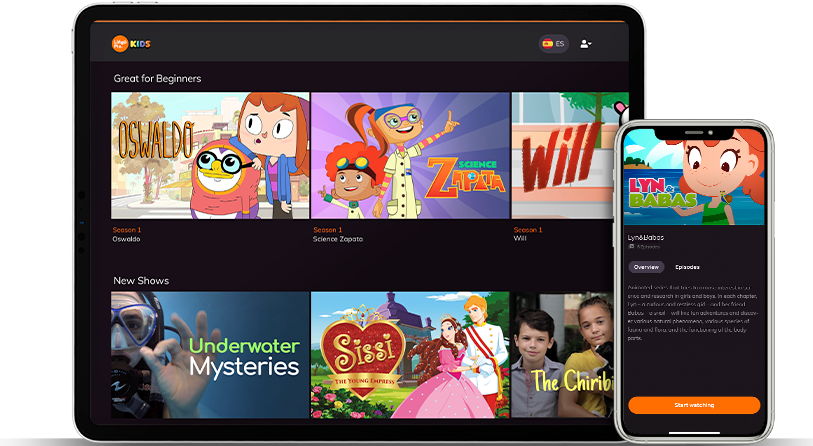
Kids films are a great place to start if you are a beginner. The reason for this is that they usually have more simple language that is easier to pick up.
If you have kids, you can also use this time to connect more with them. If not, you can simply connect with your own inner child!
Comedy
Comedy series and movies tend to have vocabulary that is easier to learn for beginners or intermediate learners. Moreover, they abound in physical gestures, which can also aid understanding.
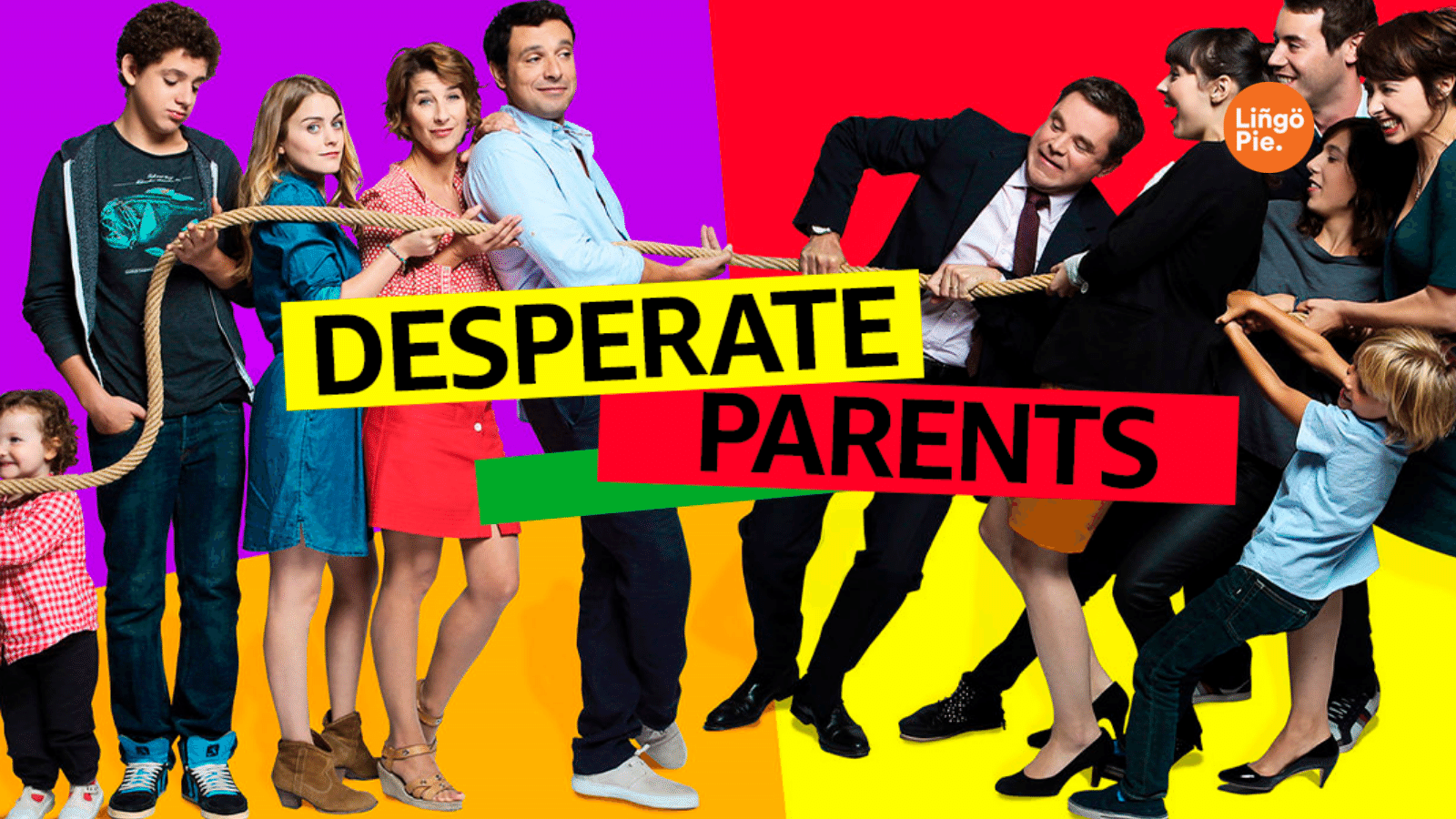
This will be especially true for Latin languages. For example, if you're learning Spanish or Italian, noticing body language will be really helpful, since a native speaker would usually accompany their words with certain gestures.
If you're into dark humor, this genre will fall into a different category, since it may tend to be wittier and, therefore, more challenging. When this is the case, the vocabulary is less straightforward.
Action
Action movies and series tend to be more appropriate for intermediate or advanced learners.
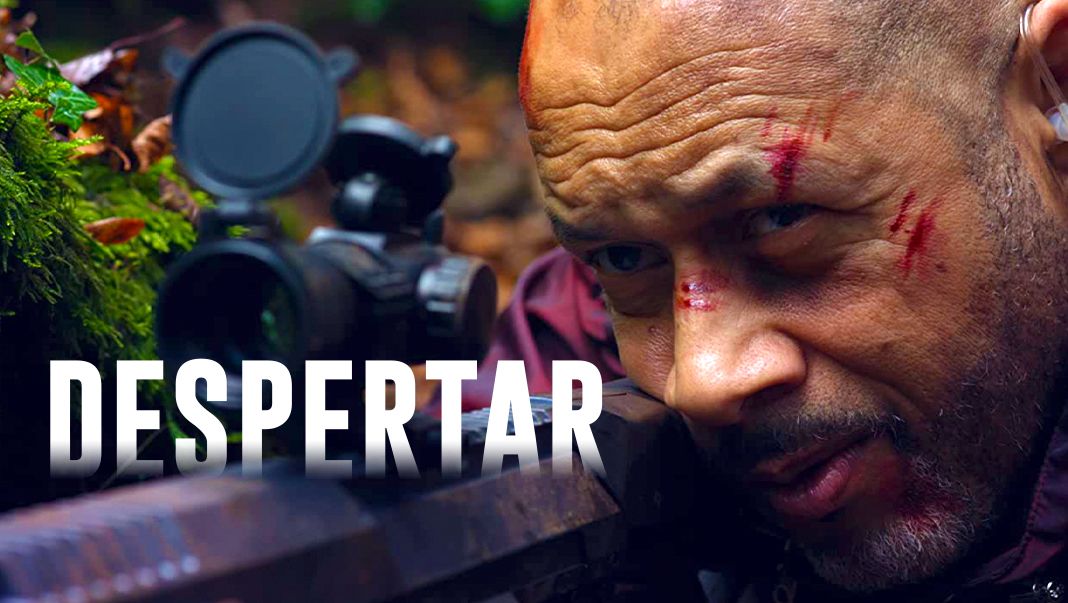
Their pace is usually faster and their plots more complex. This will usually require a higher level of comprehension for a learner to be able to follow the story in a light and easy manner.
By length
Short films
If you're a beginner, choosing short films may help you with learner's fatigue. When you're starting to learn a language, it may be difficult to concentrate for large stretches of time.
Hence, sticking to shorter content may be appropriate if you're training your ability to stay focused in another language.
Series
Series will help gage how long you expose yourself to your target language, depending on the length of episodes.
Since they have several episodes, you also have the opportunity to go deeper into a certain story or to get to know a set of characters better.
For instance, the Spanish series Money Heist (La Casa de Papel) is very plot based and fast paced, which will be more appropriate for more advanced learners. We have created a free Netflix guide to support your studies with La Casa de Papel.
Feature films
We would recommend that you watch feature films once you're at least an intermediate learner. Feature films can go up to two hours, which does require a high level of concentration.
That being said, if you're a cinema enthusiast, do give some a try!
By platform

Netflix
Netflix has a huge variety of audiovisual content available in multiple languages.
For example, if you're looking to learn how to speak French, Drôle is an incredible comedy series you can watch. You'll be listening to native speaker French in a raw and comedic environment.
We've written an article to outline the best French TV shows on Netflix. Check it out if you're learning French at the moment!
YouTube
YouTube has the advantage of having shorter or longer content that may be easier to watch at first. It also has an enormously large selection of content on all kinds of topics, genres etc.
If you want to find out more about how to learn a language with YouTube, check out our article on this topic!
Lingopie
Lingopie is an incredible choice for language learners who want to learn a foreign language by watching TV.
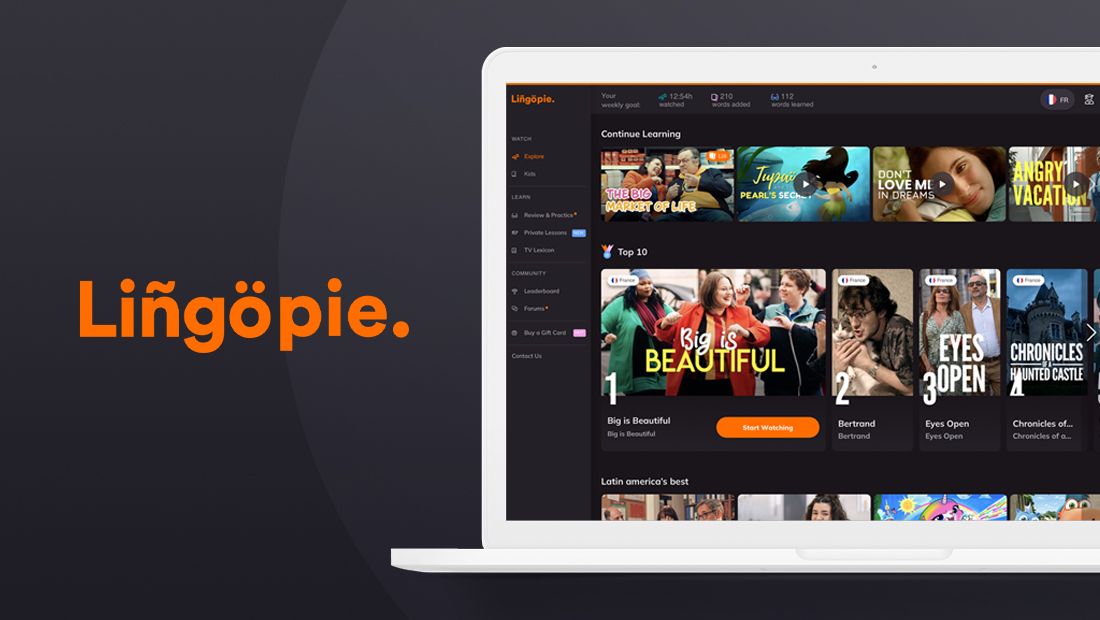
This innovative platform is an all-around language learning platform, focusing specifically on immersive and engaging features that support you throughout your learning process.
You can choose from video and film content of all lengths, themes, and genres in Spanish, Italian, French, German, Portuguese, Russian, Japanese, and Korean.
Besides having access to varied content, you'll get features that include dual subtitles, whereby you'll have both the subtitles in English and in the original language at the same time, built-in transcripts on the side as you're watching, and even quizzes to practice new vocabulary.
We also recommend learning with different media formats; such as learning a language with podcasts or audiobooks.
Ready to go: Start watching TV in your target language
In this article, we have shown you how you can use foreign language TV to learn a new language! We outlined both why it's an effective, yet fun method and offered you tips to optimize your learning. Please check out our article dedicated to learning Spanish with video!
Not only that, but we've also given you valuable information on how to choose which TV series to watch and what platforms you can use to find the best resource material to help you reach your goal efficiently.
Well, learning languages has now become your new favorite pass time! By watching movies and television series in your target language, you'll expand your vocabulary in an organic way. Who wouldn't want that?
Binge-watch some incredible movies and before you know it, you'll have started speaking and understanding the language of your choice.
Get ready to learn a language the exciting way! Sign up for a free trial with Lingopie and gain access to a wide range of content in an array of languages.


![How to Learn a Language by Watching TV [7 Easy Steps]](/blog/content/images/size/w1200/2022/10/Blog-imgs.webp)




![5 Official Spanish Language Tests To Show Your Proficiency Level [Guide]](/blog/content/images/size/w300/2025/06/Spanish-Language-Tests.jpg)
![Why Memorizing Spanish Words Won’t Make You Fluent [Tips]](/blog/content/images/size/w300/2025/06/how-to-practice-spanish-vocabulary.jpg)
![How to Improve Your Polish Conversation Skills [5 Best Tips]](/blog/content/images/size/w300/2025/06/improve-polish-conversation-skills.jpg)
